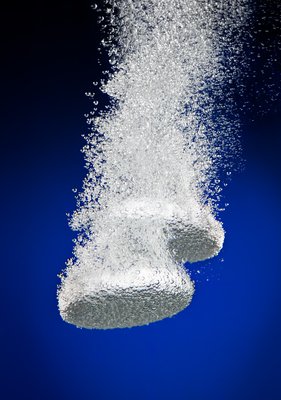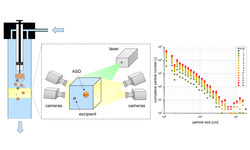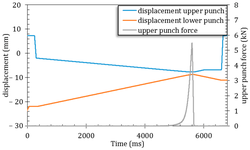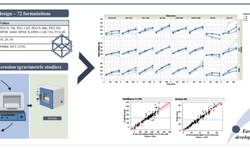Scientific papers
A novel methodology for segmenting the three-dimensional (3D) internal structure of Ibuprofen tablets using synchrotron tomography is introduced. This method involves a physically coherent trinarization process for greyscale images of Ibuprofen tablets, identifying three phases: microcrystalline cellulose, Ibuprofen, and pores. The approach combines statistical learning with a watershed algorithm, enabling the computation of microstructure characteristics through statistical image analysis. A comparison with experimental results reveals a significant number of pores below the resolution limit. Additionally, the analysis suggests that these pores constitute the majority of the surface area between pores and solid components. The proposed method also computes microstructure characteristics, such as local percolation probabilities and chord length distribution functions, which are not experimentally accessible. These characteristics play a crucial role in quantifying the impact of tablet compaction on its microstructure. The presented approach enhances understanding of the relationship between production parameters and microstructure characteristics based on 3D image data of Ibuprofen tablets produced under various conditions, shedding light on key effects on the strength and solubility kinetics of the final formulation.
Lay Description:
The typical composition of uniaxially compacted Ibuprofen tablets includes a blend of an excipient (microcrystalline cellulose) and an active ingredient (a ground fraction of Ibuprofen). The mechanical strength and release kinetics of the tablet are strongly influenced by its microstructure, specifically the spatial arrangement of microcrystalline cellulose and Ibuprofen within it. To optimize tablet performance, it is crucial to investigate the relationship between microstructure and production parameters. 3D imaging is a powerful tool for this purpose, enabling the computation of microstructural properties that cannot be obtained through experimental techniques.
In this study, a new algorithm for accurate trinarization of 3D image data obtained through synchrotron tomography is presented. Trinarization involves reconstructing microcrystalline cellulose, Ibuprofen, and pores based on 3D images with varying greyscale values. The hybrid approach combines artificial intelligence-based trinarization with a geometrically motivated algorithm, facilitating the computation of microstructure characteristics through image analysis. Comparison with experimental results highlights a significant presence of pores below the resolution limit, with the analysis suggesting that these pores constitute the majority of the surface area between pores and solid components. Moreover, the method computes characteristics that help quantify the influence of tablet compaction parameters on its microstructure. This innovative approach aids in understanding the relationship between production parameters and microstructure characteristics based on 3D image data of Ibuprofen tablets manufactured under different mixing, loading, and processing conditions.

Comments
No comments posted yet.
Add a comment















